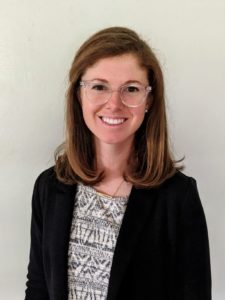
U Mechanical Engineering PhD student Brooke Stanislawski recently took second place with her poster, entitled “The influence of row spacing on convective cooling and performance of solar farms,” at the 2021 Photovoltaic Reliability (PV) Workshop. This yearly event is hosted by the National Renewable Energy Laboratory in Golden, Colorado. The conference focuses on current issues in solar, system reliability, reducing the cost of solar electricity, and promoting investor confidence.
Stanislawski’s poster was entitled “The influence of row spacing on convective cooling and performance of solar farms.” This is a project funded by the US Department of Energy, grant number DE-EE0008168, and in collaboration with Portland State University and NREL. It aims to increase the efficiency of utility-scale PV farms by arranging the modules in a way that enhances cooling through convection.
“When PV modules heat up, their efficiency drops and degradation accelerates,” said Stanislawski. “This poster focuses on the cooling and performance effects of row spacing in solar farms. We use numerical simulations to model a suite of solar farm arrangements with varying row spacing to study the flow behavior and convective heat transfer within the farm. Results indicate that increasing row spacing increases convective cooling by 20% and boosts power output by over 1%, based on conservative estimates.”
Existing cooling systems haven’t been adopted in utility-scale PV plants because they require additional power or assembly. This work instead proposes a low-cost cooling solution that reduces PV module operating temperatures and boosts power output just by modifying farm arrangement.
“These solutions represent one of the strategies needed to achieve the 2030 SunShot goals of reducing the levelized cost of energy (LCOE) of solar PV,” said Stanislawki, “the most important factor in the future deployment of solar energy.”

Future research will expand arrangement variables that can contribute to cooling, as well as validating results with field experiment data. This new understanding of the relationship between arrangement and cooling to passively control the flow and enhance convection may be one more piece of the puzzle to reducing the cost of solar.
As part of Dr. Marc Calaf’s Wind Energy & Turbulence Lab at the U, Stanislawski studies the interaction between utility-scale solar farms and atmospheric flow in an effort to increase PV module efficiency in support of the Department of Energy SunShot Initiative. To learn more about this work and other related research, visit the Laboratory of Wind Energy & Turbulence website.